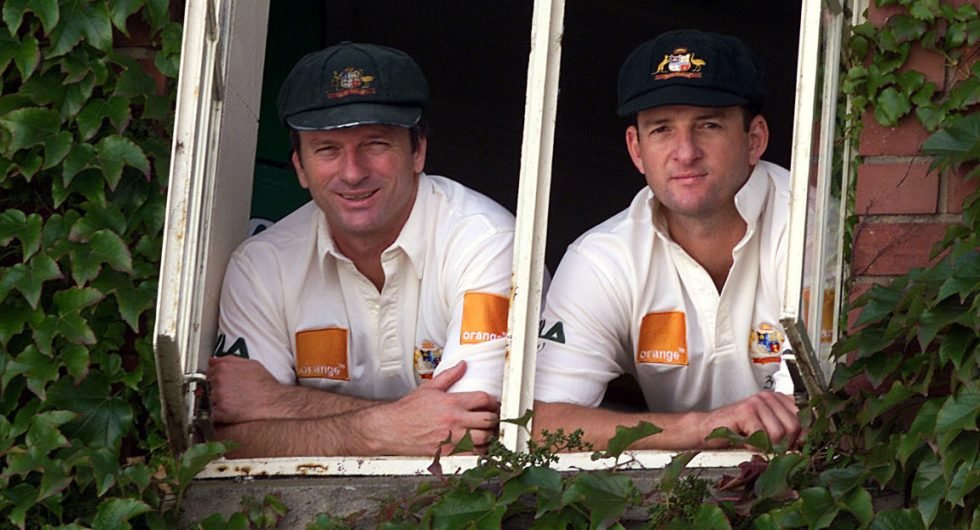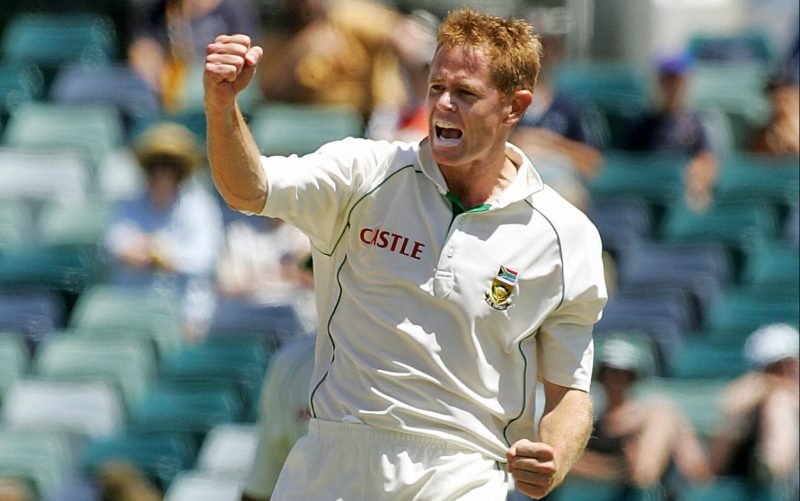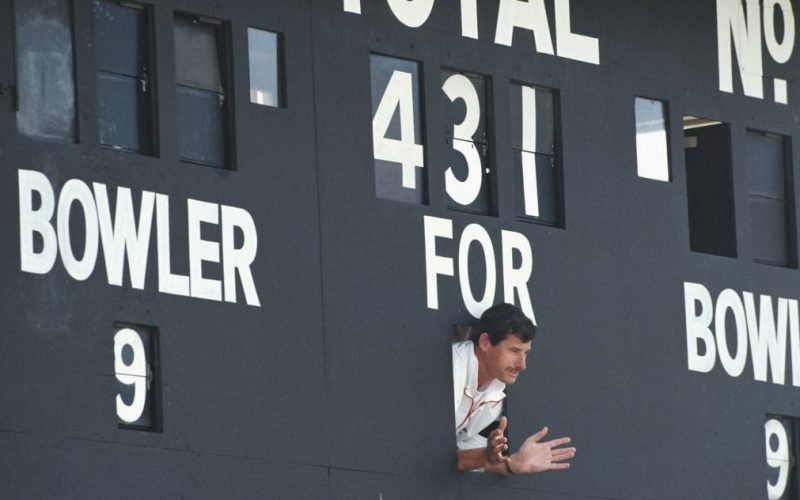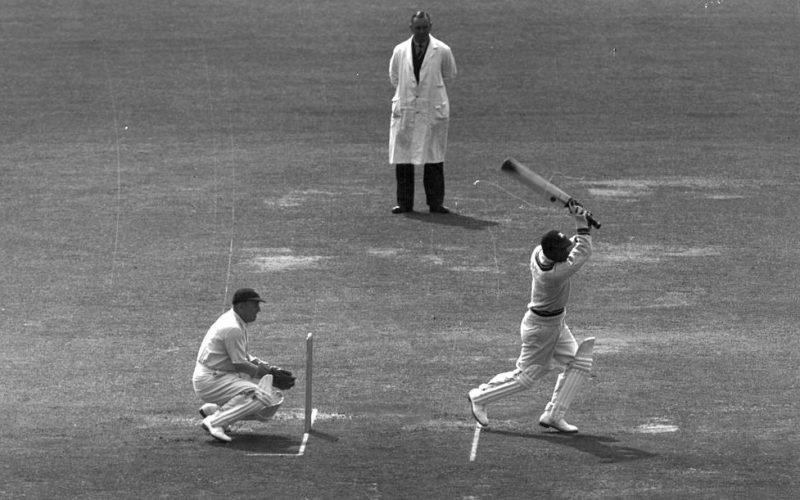The Ten: Cricket dynasties – From the Waughs to the Pollocks

From the Waughs to the Pollocks – in 2008, Ian Batch and Jo Harman penned down the most prominent cricket dynasties of all time.
Published in 2008
10. The Waughs
Steve Waugh
First-Class Matches: 356 (1984-2004)
Tests: 168 (1985-2004)
Mark Waugh
First-Class Matches: 368 (1985-2004)
Tests: 128 (1991-2002)
Dean Waugh
First-Class Matches: 1 (1995)
The Waugh twins were the heartbeat of the Australian middle order throughout the Nineties. Australia lost just seven of the 37 Test series the brothers played alongside each other, as Steve (gritty, dogged) and Mark (laconic, invariably mulleted) combined to great effect.
Steve was the first to receive his baggy green cap, making his debut against India in 1985. Mark, the younger sibling by four minutes, and so fated to be known as Junior for the rest of his days, had to wait a further six years for his first taste of Test cricket.
When Junior did eventually receive the call during the 1991 Ashes it was a bittersweet experience, as it came at the expense of Steve’s place in the side. Another nickname – ‘Afghanistan’ (the forgotten war/Waugh) – could finally be dropped as Mark made a stunning debut hundred.
Steve went on to become the most successful captain and the second highest scoring batsman in Australia’s history while the mercurial Mark cemented his place at number four for the next decade but continued to thrill and frustrate in equal measure. Between them they defined modern Australian cricket – guts, drive, grit on the one hand; style, elegance, class on the other.
Younger brother Dean also had a brief first-class career but if the opinion of ex-New South Wales paceman Richard Stobo is anything to go by then he wasn’t quite in the same league as his more celebrated brothers. After beating Dean’s outside edge several times in succession during a Sydney grade game an exasperated Stobo exclaimed, “for Christ’s sake Dean, you must have been ***king adopted.
9. The Hussains
Joe Hussain
First-Class Matches: 1 (1964)
Mel Hussain
First-Class Matches: 1 (1985)
Nasser Hussain
First-Class Matches: 334 (1987-2004)
Tests: 96 (1990-2004)
English cricket lost a stalwart this year. Jawad Hussain, or Joe as the lads who came to his famous Ilford Cricket School knew him, passed away in April. He was 68. He left behind two cricketing sons of similar ability, and a legacy few can match. His eldest boy, Mel, played a single game for Worcestershire before moving successfully into the business world; the other, Nasser, you may have heard of.
Joe himself played a single game for Madras in India before starting a new life in England, taking over the rickety old cricket school in Ilford and turning the building into a breeding ground for future Essex cricketers. Some of the other names to have passed through the doors include Graham Gooch, John Lever and Ravi Bopara, but it was more than just a finishing school for budding professionals; Joe’s place, stationed in a rough grey area, was a haven for cricket. It gave young lads, many from the cricketing no man’s land of east London and its outskirts, a rare chance to swing a bat or spin a ball.
It is true that without Joe’s drive and passion, without his deep understanding of the game and the role it can play in a young person’s life, cricket in this country would be a poorer thing. He gave us Nasser, and all that flowed from him. That is legacy enough. But for every Nasser, or Goochie, or Ravi, there were another hundred nippers who walked through those doors knowing nothing, and who walked out knowing so much more.
8. The Cowdreys
Ernest Cowdrey
First-Class Matches: 1 (1926)
Colin Cowdrey
First-Class Matches: 692 (1950-76)
Tests: 114 (1954-75)
Chris Cowdrey
First-Class Matches: 299 (1977-92)
Tests: 6 (1984-88)
Graham Cowdrey
First-Class Matches: 179 (1984-97)
It’s 1934 and the setting is a tennis court in Ootacamund – a small city located in the Niligiri Hills, south India. A cricket-mad father named Ernest is teaching his four-year-old son how to play with a straight bat.
Ernest had aspirations as a cricketer himself but despite playing one first-class match he never made the grade and instead worked as a tea-planter. Like so many parents with unfulfilled dreams who plough their energies into their offspring, Ernest christened his son with the initials MCC.
Thirty-four years later Ernest’s hard work had paid off. Colin Cowdrey strode out to bat at Edgbaston in his hundredth Test to face the old enemy in the third Test of the Ashes. Cowdrey was the first cricketer to reach the milestone and he celebrated in style with his 21st Test century and his first against the Australians.
Cowdrey, a true gentleman of the game, played 114 Tests averaging 44 and it’s testament to his natural ability that despite such achievements Fred Trueman once described him as “a terrific talent who never fulfilled his potential.”

Colin Cowdrey taking tips from Sir Don Bradman in Adelaide, 1974
Enter his two sons Chris and Graham. A little pressure you might say.
Elder son Chris suffered particularly under the weight of his father’s reputation. A solid county all-rounder for Kent and later Glamorgan, his moment came in 1988, when he was suddenly elevated to captain England against the rampant West Indians.
Nepotism was shouted from the rooftops and with his godfather Peter May as chairman of selectors and a modest county record behind him it was hard to argue. Cowdrey scored 0 and 5, the West Indies romped home by ten wickets and he never played for his country again.
Chris entitled his autobiography, ‘Good Enough?’; That question mark speaks volumes.
Younger brother Graham benefited from entering the first-class game seven years later than his brother. With the memory of his father’s achievements not as fresh, he was allowed to forge a commendable first-class career at Kent in his own right as a hard-hitting middle-order batsman.
The Van Morrison devotee (he once chauffeured the Irish jazzman on his tour of Britain) had a relaxed attitude to his cricket but there were high points – in 1995 he combined with Aravinda de Silva in a partnership of 368, which remains a Kent record for any wicket partnership.
7. The Huttons
Sir Leonard Hutton
First-Class Matches: 513 (1934-55)
Tests: 79 (1937-55)
Ben Brocklehurst
First-Class Matches: 64 (1952-54)
Frank Dennis
First-Class Matches: 92 (1928-39)
Richard Hutton
First-Class Matches: 281 (1962-76)
Tests: 5 (1971)
John Hutton
First-Class Matches: 1 (1973)
Simon Dennis
First-Class Matches: 104 (1980-91)
Ben Hutton
First-Class Matches: 110 (1998-2007)
Oliver Hutton
First-Class Matches: 1 (2004)
Arguably the greatest batsman England has ever produced, none of Sir Leonard’s relations came close to matching his achievements but for sheer numbers and family connections the Huttons must rate as one of cricket’s greatest dynasties.
Len himself played 79 Tests for England and would have played many more but for the war. In 1938 the Yorkshire-born opening batsman surpassed Don Bradman’s world record Test score, making 364 against the Australians at the Oval. During his career Len played county cricket alongside his brother-in-law, the fast bowler Frank Dennis, who had a long and successful spell with Yorkshire.
And to continue the family connection Frank’s nephew Simon played over 100 first-class matches during the Eighties for Yorkshire and Glamorgan.
Len’s two sons John and Richard also went on to play first-class cricket. John played just one match for the MCC but older brother Richard had a more decorated career, spending 12 years at Yorkshire and playing five Test matches for England.
But Richard’s career was blighted by constant comparisons to the illustrious career of his father. In 1971 he was selected to play for the World XI that replaced the South African tourists in Australia. Alongside some of the greats of Test cricket he looked out of his depth and subsequently faded into international obscurity.
The most recent generation of the Huttons are Len’s two grandsons Oliver and Ben. Younger brother Oliver represented Oxford University while Ben spent ten moderately successful years at Middlesex, captaining the side for two seasons before retiring aged just 30 at the end of the 2007 season.
As though Ben and Oliver’s cricketing heritage wasn’t extensive enough, their other grandfather was the late Ben Brocklehurst – a former Somerset captain and proprietor of The Cricketer magazine. Richard Hutton later edited the magazine. Keeping it in the family..
6. The Pollocks
Andrew Pollock
First-Class Matches: 7 (1934-38)
Robert Howden
First-Class Matches: 3 (1939-40)
Peter Pollock
First-Class Matches: 127 (1958-72)
Tests: 28 (1961-70)
Graeme Pollock
First-Class Matches: 262 (1960-87)
Tests: 23 (1963-70)
Andrew Pollock
First-Class Matches: 21 (1991-98)
Anthony Pollock
First-Class Matches: 33 (1991-2000)
Shaun Pollock
First-Class Matches: 186 (1991-2008)
Test: 108 (1995-2008)
Peter and Graeme Pollock were two of the finest of the unlucky generation of South Africans to have their Test careers curtailed.
The South African tour to England in 1965 left observers in little doubt of their talent as the Pollock brothers’ astonishing performance in the victory at Trent Bridge led South Africa to a famous series win in England. But this was to be the pair’s only tour to England as South Africa’s ban from international cricket followed in 1971.
The siblings had a considerable cricketing pedigree with their father Andrew keeping wicket for Orange Free State and their uncle Robert Howden representing Natal way back in the Thirties.
And the family of professional cricketers kept growing as Graeme’s sons Andrew and Anthony both went on to represent Easterns, Transvaal and Leicestershire. But it was Peter’s son Shaun who was the star of the next Pollock generation.
Shaun will be remembered as one of the modern game’s great all-rounders and his 108-Test career must have offered some consolation to his father, whose own Test career was cut short after just 28 matches.

Shaun Pollock, a modern great
5. The Hadlees
Walter Hadlee
First-Class Matches: 117 (1933-52)
Tests: 11 (1937-51)
Barry Hadlee
First-Class Matches: 84 (1961-81)
Dayle Hadlee
First-Class Matches: 111 (1966-84)
Tests: 26 (1969-78)
Sir Richard Hadlee
First-Class Matches: 342 (1971-90)
Tests: 86 (1973-90)
Cricket is something of a family business in New Zealand. With a population of a little over four million and just six first-class teams it would seem the right genetic makeup puts you on the fast track to international recognition.
Cairns, Crowe, Howarth, Bracewell and Harris have all been recurring names for the Black Caps, and in recent years the Marshalls, McCullums and Redmonds have kept the family tradition alive.
But the honour of New Zealand’s undisputed cricketing royal family must surely go to the Hadlees.
The legacy began with Walter Hadlee, a tall and elegant opening batsman who captained New Zealand on their tour of England in 1949. Still seeking their first Test match victory, he led the relative international newcomers to unprecedented success, drawing the four-Test series 0-0.
Walter played 11 Tests and went on to play a key role in the administration of New Zealand cricket as a national selector, team manager and chairman of the board. But his most valuable contribution to New Zealand cricket was his offspring.
The first to make the breakthrough was young tearaway fast-medium bowler Dayle, but even Hadlee senior wasn’t convinced. “They got the wrong Hadlee”, declared his less than supportive father – believing the selectors should have opted for older brother Barry instead.
Despite his old man’s protestations Dayle went on to have a respectable if unspectacular international career
taking 71 wickets in 26 Tests and is now the national bowling coach.
Elder brother Barry did eventually make his international bow at the ripe old age of 33. An opening batsman in the mould of his father, he featured in two one-day internationals alongside his brothers Dayle and the Michael Jackson of the family, Richard.
If Walter was the first king of New Zealand cricket then Richard was his undisputed heir to the throne. In an international career spanning 17 years, like his father before him, he took the national team to unprecedented heights.
Affectionately known as Paddles, the clown-footed paceman became the first player to take 400 wickets in Test cricket and scored over 3,000 runs for good measure.

Richard Hadlee was the first man to 400 Test wickets
4. The Chappells
Vic Richardson
First-Class Matches: 184 (1918-38)
Tests: 19 (1924-36)
Ian Chappell
First-Class Matches: 262 (1961-80)
Tests: 75 (1964-80)
Greg Chappell
First-Class Matches: 321 (1966-84)
Tests: 87 (1970-1984)
Trevor Chappell
First-Class Matches: 88 (1972-85)
Tests: 3 (1981)
The win-at-all-costs and fearless attitude now so synonymous with Australian cricket can in large part be credited to the Chappell dynasty.
The grandfather of the Chappell triumvirate, Vic Richardson, was a fierce competitor and remarkable all-round sportsman. An exceptional fielder and destructive middle-order batsman, he played 19 Test matches for Australia between 1924-35, captaining his country on five occasions.
Some of his talent clearly rubbed off. His grandsons Ian and Greg will be remembered as two of the greatest players ever to represent their country.
Famously described by John Arlott as “a cricketer of effect rather than the graces”, Ian was as tenacious and tempestuous as they come. Often acknowledged as the architect of sledging, ‘Chappelli’ was more than happy to put a few noses out of joint to aid the Australian cause.
He later said: “As a captain of Australia my philosophy was simple: between 11am and 6pm there was no time to be a nice guy. We didn’t deliberately set out to be a bunch of bastards but I’d much prefer to be described like that than a nice bunch of blokes on the field.”
Ian’s younger brother Greg never reached the same heights as captain of the national side, but he was the superior Australian batsman of his generation by a distance.
An elegant strokemaker with fearsome powers of concentration, he averaged 54 in his 87-Test career.
Baby brother Trevor never fully stepped from the shadow of his brothers. Despite playing three Tests and 20 one-day internationals the bowling all-rounder will be best remembered for his role in the infamous underarm incident, after older brother Greg instructed him to roll the ball along the ground to ensure victory.
3. The Headleys
George Headley
First-Class Matches: 103 (1927-54)
Tests: 22 (1930-54)
Ron Headley
First-Class Matches: 423 (1958-74)
Tests: 2 (1973)
Dean Headley
First-Class Matches: 139 (1991-99)
Tests: 15 (1997-99)
The Headley dynasty makes the record books by virtue of being the only family to have had three generations play Test cricket.
The Headley story began with the Panama-born George, one of the greatest batsmen ever to play Test cricket. But the dynasty could have been crushed before it had even begun but for a fateful intervention.
George, who moved to Jamaica aged 10, had planned to pursue a career in dentistry in the USA. But while waiting for a delayed passport he was selected to play against a visiting English team. The gifted right-hander scored 78 and 211 in consecutive matches and the rest, as they say, is history.
The man dubbed ‘the black Bradman’ went on to become the first great batsman to emerge from the Caribbean, scoring 176 on his Test debut against England in 1930, and in a career punctuated by the war Headley played 22 Tests and hit an astonishing 10 centuries at an average of over 60.

George Headley batting against England at Old Trafford, 1939
His son Ron, although a talented player, never possessed the quality of his father and played the majority of his first-class cricket in England. “I recognised quite early that you can’t have two geniuses – father and son – in one family. I felt annoyance at other people as they would try and compare me with him,” Ron later said.
The elegant left-handed opener had 16 seasons at Worcestershire and was a key member of the side that won back-to-back Championships in 1964 and 1965.
In the twilight of his career Ron received the call he thought would never come. He was drafted into the 1973 touring West Indies Test side to play England after an injury crisis. But in reality his time had been and gone and he played just two Test matches with little success.
His son Dean enjoyed a more successful international career. After languishing in Middlesex seconds and struggling to make an impact after a move to Kent he finally announced himself on the county scene with three hat-tricks in the 1996 season.
The following year he made his international debut for England in the Ashes at Manchester. The right-arm paceman gave the Aussie left-handers a torrid time with his bounce and reverse-swing and took eight wickets in the match. Deano repeated his feats in the 1998/99 Ashes series, taking 6-60 in the second innings at Melbourne to scoop the man-of-the-match award and give England a famous victory.
But like his father he never fulfilled his potential in Test cricket as his career was curtailed after just 15 Tests when he was forced to retire in 1999 with persistent back problems.
2. The Mohammads
Wazir Mohammad
First-Class Matches: 105 (1949-64)
Tests: 20 (1952-59)
Raees Mohammad
First-Class Matches: 30 (1948-63)
Hanif Mohammad
First-Class Matches: 238 (1951-76)
Tests: 55 (1952-69)
Mushtaq Mohammad
First-Class Matches: 502 (1956-80)
Tests: 57 (1959-79)
Sadiq Mohammad
First-Class Matches: 387 (1960-85)
Tests: 41 (1969-81)
Shoaib Mohammad
First-Class Matches: 211 (1976-2002)
Tests: 45 (1983-1995)
No other dynasty has had such an impact on the shaping of a cricketing nation than that of the Mohammads of Pakistan. Following their introduction to Test cricket in 1952 the first 101 Tests played by Pakistan featured a member of the Mohammad family.
The four brothers Wazir, Hanif, Mushtaq and Sadiq played a total of 170 Tests for Pakistan, and a fifth brother Raaes was told the night before a Test match that he was selected, only to be demoted to 12th man the following morning.
Hanif was the star of the family. Renowned for his unparalleled powers of concentration, he retains the record for the longest innings in Test history for his 337 in 970 minutes against the West Indies in 1958.
With the Second Test against Pakistan beginning tomorrow, it’s a good moment to remember Hanif Mohammad, one of their greatest batsmen.
His Wisden obituary in 2017 recalled an extraordinary career.https://t.co/YjPXq2sChN#wisdenobits #wisdenarchive
— Wisden Almanack (@WisdenAlmanack) August 12, 2020
The following year he achieved the highest first-class innings to that point, scoring 499 for Karachi. The original ‘Little Master’ is also credited with the creation of the reverse sweep.
His son Shoaib went on to enjoy a successful Test career, scoring seven centuries in 45 matches. Like his father he won’t be remembered as one of cricket’s more electrifying batsmen but he proved to be an essential brick wall as Pakistan made their mark on the world stage in the 1980s.
1. The Graces
Edward Grace
First-Class Matches: 314 (1862-96)
Tests: 1 (1880)
WG Grace
First-Class Matches: 870 (1865-1908)
Tests: 22 (1880-1899)
Fred Grace
First-Class Matches: 195 (1866-80)
Tests: 1 (1880)
WG Grace (jnr)
First-Class Matches: 57 (1893-1903)
Charles Grace
First-Class Matches: 4 (1900-06)
Alfred Grace
First-Class Matches: 2 (1886-1891)
Norman Grace
First-Class Matches: 3 (1920-27)
In the year 1848, in Downend, Bristol, Martha Grace gave birth to the third of four sons. She christened him William, William Gilbert.
WG – or Gilbert as Martha called him – was born into cricket. His father Henry and his uncle Alfred were enthusiasts of this genteel Victorian pastime, but it was Martha, in the family’s back garden around the vegetable patch, who taught the game and techniques to her children, Henry, Frederick, Edward and our William Gilbert. All her boys showed aptitude, with WG showing particular promise.
Most elite sportsmen don’t reach their optimal level without the commitment and support of their parents. But some parents have such a profound input that any analysis would be incomplete without reference to their massive contribution, both emotional and technical. Tiger Woods was groomed by his father Earl from birth to such an extent that by the age of five he completed a par three course in level par. Another good, if less extreme example would be Judy Murray, whose dedication and expertise has meant that her two sons Jamie and Andy have made it as tennis players in an era where the LTA have produced none, despite the millions invested.
Martha was sport’s first pushy parent. In 1859, she wrote to George Parr, the England captain, with an audacious request:
“I am writing to ask you to consider the inclusion of my son, EM Grace – a splendid hitter and most excellent catch – in your England XI. I am sure he would play very well and do the team much credit. It may interest you to learn that I have a younger son, now twelve years of age, who will in time be a much better player than his brother because his back stroke is sounder, and he always plays with a straight bat. His name is WG Grace.”
It’s one of cricket’s most precious pieces of prose. Martha’s zest for the game would spawn a total of ten first-class cricketers crowding under the Grace family tree; Edward would indeed go on to play for England, as would young Fred, but the brothers would be usurped by their middle sibling. What is most revealing from the letter is the reference to her young son’s back foot technique and straight bat. Martha’s central concern with the development of WG Grace’s technique makes her in many ways the game’s most influential coach of all time; WG was later credited as the first player to play both off both front and back foot. From historical record she was no light touch either, reportedly lambasting her son after a bad shot: “How many times, Gilbert, have I told you how to play that ball?”
CLR James, the great academic and cultural historian, asserts in his book Beyond a Boundary that WG Grace was a towering figure who was personally responsible for popularising the game, nothing less than the most famous and iconic Englishman of the Victorian era. CLR dismisses two famous historical and social books written about Victorian times for the sole reason that they failed to include anything about WG Grace. By the same token, no mention of WG’s scope and influence should be made without a nod to the role played by his mother. Without her input, enthusiasm and expertise the game would not be what it is today. God bless Mother Cricket.
First published in 2008

